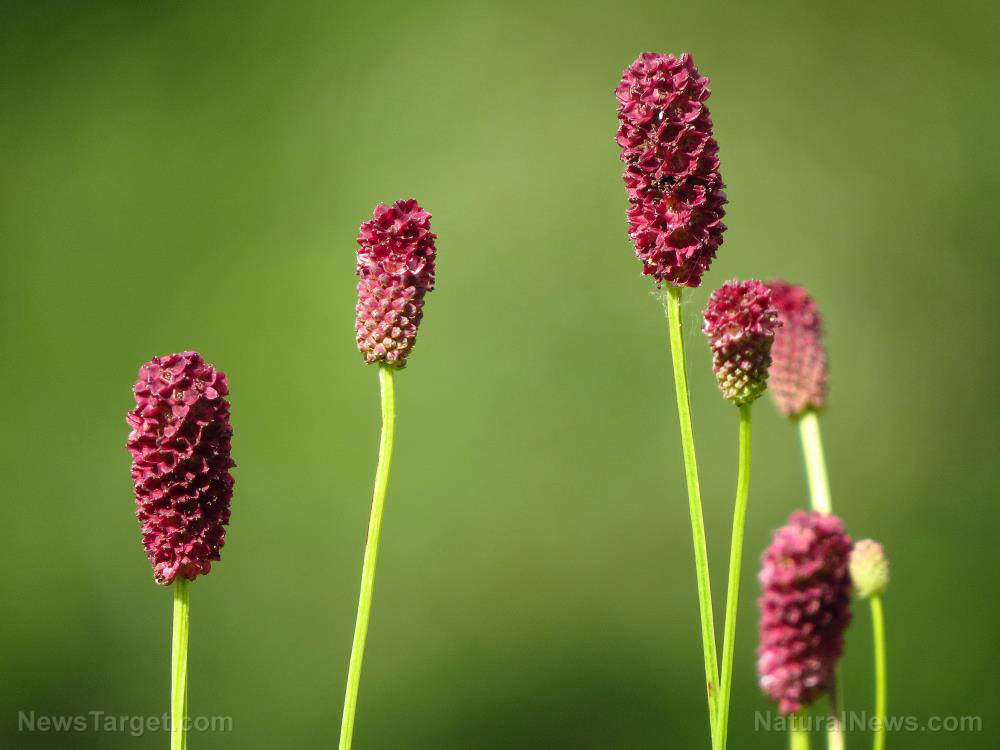
Burnet plants and their health benefits
Sanguisorba, also known as burnet, is a family of perennial herbs that can be easily identified by their thin, upright stems and club-shaped clusters of dark red flowers. The roots of burnet plants are their most medicinal parts; they have been used since long ago to make herbal preparations. According to traditional Chinese medicine, burnet roots are bitter and have slightly cold properties, so they are associated with the Liver, Stomach, and Large Intestine meridians. They are useful for treating skin conditions and health problems that involve bleeding, as well as promote healing. Burnet roots are used with other herbs to make larger herbal formulas.
Two of the most well-known burnets are Sanguisorba officinalis, also known as greater burnet, and Sanguisorba minor, commonly called salad burnet. Greater burnet is a species of Sanguisorba that is widespread in Europe, North Africa, and temperate areas in Asia. Aside from its small, dark red flowers, greater burnet also bears fruits, which are small nuts that contain one seed. The rhizomes, roots, and fresh aerial parts of greater burnet are the important parts used to make herbal medicine. The main active components of greater burnet are flavonoids, saponins, ursolic acid, arabinose, vitamin C, essential oils, and tannins. Greater burnet is widely used as a hemostatic agent in Western and Chinese herbal medicine.
As a medicinal herb, greater burnet is used to stop bloody dysentery and nosebleeds. Its leaves can be used to make tonics for fever and bleeding, while its roots are used to make skin ointments for burns, sores, boils, eczema, and other skin diseases. They can also be used to treat hemorrhoids, heavy menstrual bleeding, leucorrhea, peptic ulcers, and diarrhea. Today, researchers know greater burnet for having the following biological activities:
- Analgesic
- Anti-inflammatory
- Coagulant
- Diuretic
- Antibacterial
- Antipyretic
- Cooling
- Styptic
- Anticoagulant
- Astringent
- Detoxicant
Salad burnet is a potherb that is native to temperate regions of southern, western, and central Europe. This herb has edible leaves and is commonly added to salads and used for cooking. Both the roots and the leaves of salad burnet are astringent, diaphoretic and styptic. Salad burnet is effective on wounds and, when applied, can staunch any bleeding. In addition, it is used to treat gout and rheumatism, which suggests an anti-inflammatory activity.
Like greater burnet, salad burnet can be used as a soothing remedy for skin problems, such as sunburn or eczema. It can also relieve hemorrhoids and diarrhea. Salad burnet is a mild diuretic and is great for addressing urinary problems. It can also ease digestion and treat symptoms of impotence and erectile dysfunction. Salad burnet contains high amounts of the antioxidant vitamin C, so it is used to make general tonics. It is also rich in the following phytonutrients:
- Sanguisorbins
- Tannins
- Ellagitannins
- Sanguinarine
- Saponins
- Rutin
- Quercetin
- Kaempferol
- Gallic acid
- Tannic acid
- Beta-sitosterol
According to research, more than 120 chemical constituents have been isolated and identified from greater burnet and salad burnet. These compounds contribute to the wide range of pharmacological properties exhibited by these plants. However, there are still many Sanguisorba species that need more attention. Very few reports exist about their clinical use and effects.
The researchers believe that further attention should be focused on the study of plants from the genus Sanguisorba to learn more about their respective toxicology data, any relevant quality-control measures, and the clinical value of their crude extracts, active compounds, and bioactive metabolites.
Sources include:
Herbal-Supplement-Resource.com
Please contact us for more information.























